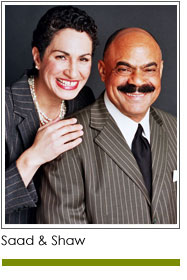 Our senior advisor, Lewis M. Rambo, PhD, frequently surprises us with nuanced questions that get at the underlying assumptions that drive nonprofits and for-profit businesses. This week he shared his article “What business are we in” with us. He encourages nonprofit leaders to define their customers – and their customer segments – in order to learn how to best meet their needs. Here is an excerpt from Dr. Rambo’s column.
Our senior advisor, Lewis M. Rambo, PhD, frequently surprises us with nuanced questions that get at the underlying assumptions that drive nonprofits and for-profit businesses. This week he shared his article “What business are we in” with us. He encourages nonprofit leaders to define their customers – and their customer segments – in order to learn how to best meet their needs. Here is an excerpt from Dr. Rambo’s column.
“What business are we in? What are we selling?” These are often the starting points for a business school case study discussion. However, this may be a question that the board members of a nonprofit organization might not think to ask themselves. Just because your organization is designated as nonprofit does not mean that it is not in business!
Inevitably, a serious examination of these questions can begin with an in-depth discussion of this question: “What is the customer actually buying from us?” ...As surprising as it might seem, nonprofit organizations are selling themselves to donors and potential donors, to their communities, and to those who are targeted to receive (buy) what they offer... The board of directors of a nonprofit may have a hard time accepting that their organization has customers. Going a step further, determining exactly who their “customers” are, and then coming to an agreement on what their customers are “buying,” can be even more confounding.
Ted Levitt, a distinguished professor at the Harvard Business School, developed the idea that to survive over time, business leaders must see themselves as satisfying a customer demand rather than producing a product. Ford, BMW, Toyota, and Tesla manufacture cars; but are their customers “buying cars?” Each one of these companies are communicating very different value messages, features, and branding. In the auto industry, Ford = tough, Toyota = dependability, BMW = performance, Tesla = luxury and eco-friendly.
Dr. Rambo’s question of nonprofits: What are you selling?
The ultimate success of an organization very much depends on a deep understanding of what “business” it is in and what its “customers” truly believe they are buying. Once coming to agreement that the beneficiaries of your organization’s initiative(s) are customers, it is then more reasonable to view them as buying or refusing to buy what you are actually “selling.”
Take the time to learn what is in your customer’s mind when she is “buying.”
Read Dr. Rambo’s article at: bit.ly/WhatBusiness
Mel and Pearl Shaw are authors of four books on fundraising available on Amazon.com. For help growing your fundraising visit saadandshaw.com or call (901) 522-8727.












